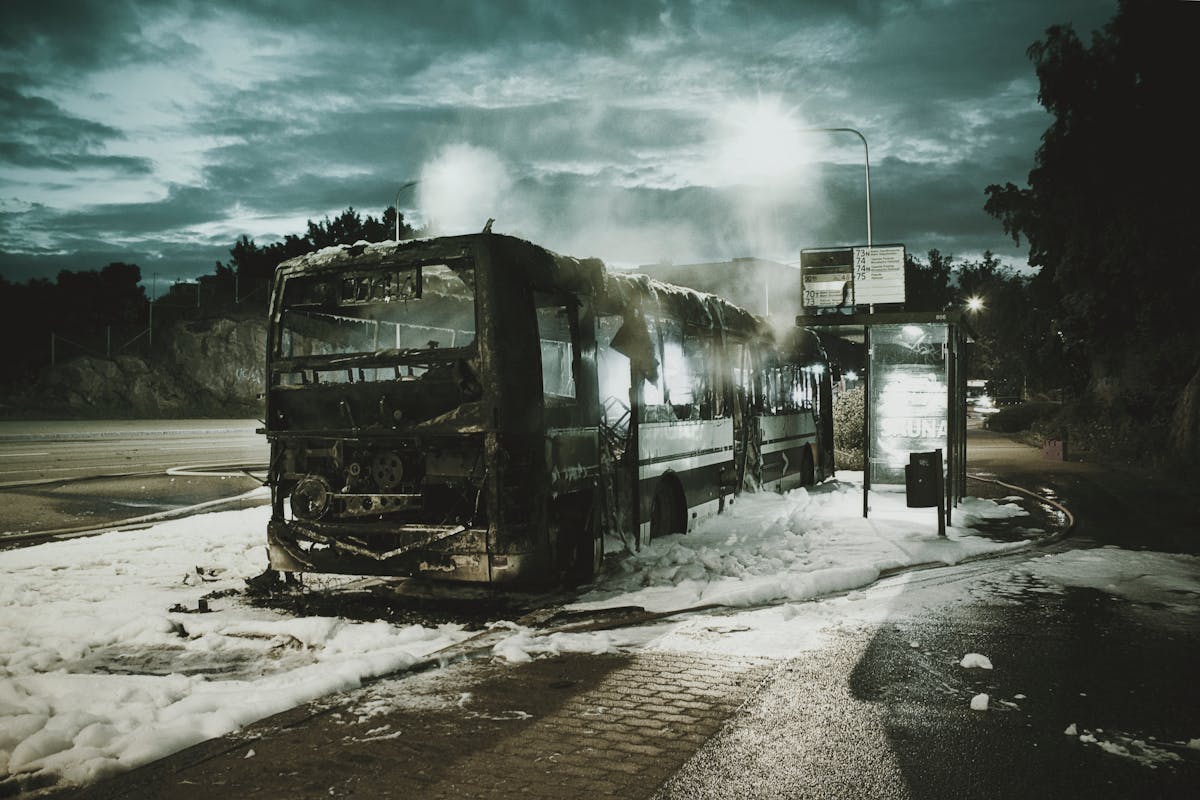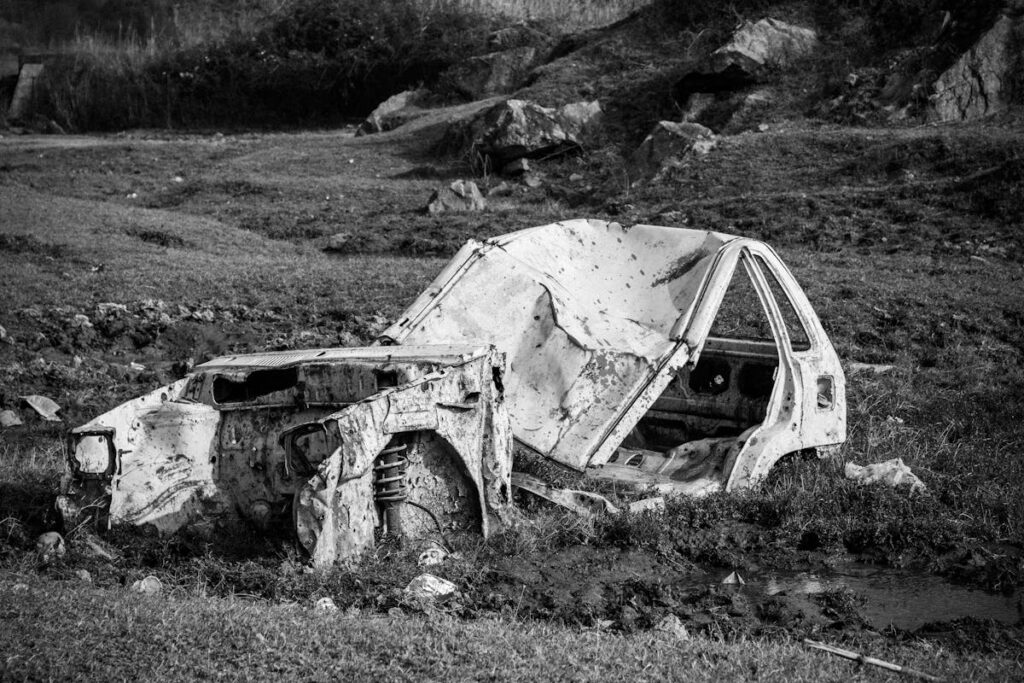From the tragic 1955 Le Mans disaster to the devastating 1990 Gisenyi bus accident in Rwanda, history is unfortunately replete with catastrophic car accidents that have taken countless lives. These incidents, often the result of inadequate safety measures, infrastructure failures, or human error, have invariably led to significant reforms in safety regulations, public transportation systems, and emergency response training. A closer look at these accidents and their subsequent impact on global safety norms not only underlines the importance of constant vigilance, but also raises intriguing questions about the balance between rapid technological advancement and safety assurance.
The 1955 Le Mans Disaster
In the annals of motorsport history, the 1955 Le Mans Disaster stands as a grim reminder of the inherent dangers of racing. This fateful event, dubbed as one of the deadliest racing tragedies, unfolded during the 24 Hours of Le Mans, the world’s oldest active sports car race in endurance racing.
On June 11, 1955, a catastrophic chain reaction occurred. Pierre Levegh’s Mercedes-Benz collided with Lance Macklin’s Austin-Healey, catapulting Levegh’s vehicle onto the embankment where a crowd of spectators stood. The car disintegrated upon impact, sending debris hurtling into the spectators at high velocity.
This calamity led to the immediate death of Levegh and 83 spectators. A further 178 were injured, marking this as the most catastrophic accident in motorsport history. The tragedy spurred a re-evaluation of safety standards, both for drivers and spectators, at racing events worldwide.
The 1955 Le Mans disaster underscores the perilous nature of racing, highlighting the necessity of stringent safety measures. It remains a stark illustration of the potential consequences when such precautions are absent or insufficient. The event continues to resonate within the motorsport community, serving as a somber reminder of the high stakes involved in the thrill of racing.
Hindenburg Auto Tunnel Catastrophe
Plunging into the shadows of history, we find ourselves confronting the Hindenburg Auto Tunnel Catastrophe, a chilling episode in the annals of vehicular accidents. This incident, eerily reminiscent of the Hindenburg disaster, unfolded in the early 20th century, within the confines of a tunnel in Germany. Notorious for its catastrophic tunnel collapse, it remains a dark milestone in automotive history.
The Hindenburg Auto Tunnel, an engineering marvel of its time, was designed to streamline transportation and minimize traffic congestion. However, its design also became its downfall. On one fateful day, a severe structural failure caused a significant section of the tunnel to collapse, trapping hundreds of vehicles within its concrete grasp.
The catastrophe was a lethal combination of engineering oversight, inadequate safety measures, and unfortunate timing. The tunnel collapse blocked both ends, leaving no room for escape. The ensuing panic and inability to rescue the trapped motorists in time led to a staggering death toll.
The Hindenburg Auto Tunnel Catastrophe underscores the importance of stringent safety measures and thorough structural assessments in engineering projects. It serves as a stark reminder of the potential human cost of negligence and complacency in design and construction.
Bronx River Parkway Tragedy
The Bronx River Parkway Tragedy, a devastating event in auto accident history, demands our attention. This discussion will initially examine the details and impact of the incident, aiming to understand the factors leading to the tragedy and its aftermath. Subsequently, the focus will shift to the safety measures instituted following the incident, evaluating their effectiveness in preventing similar accidents.
Incident Details and Impact
Steering through the curves of the Bronx River Parkway on a cool April day in 2012, a Honda Pilot carrying seven family members met a tragic end. The vehicle suddenly veered off course, catapulting over the guardrail and plunging sixty feet onto the grounds of the Bronx Zoo. The impact was so severe that it instantly claimed the lives of all the passengers, marking a grim chapter in the history of the parkway.
Investigative reports suggest numerous causal factors contributed to the catastrophe. Irregularities in the road surface, the driver’s excessive speed, and a lack of proper maintenance of the vehicle were among the cited reasons. Survivor accounts, in this case, were painfully absent due to the total fatalities.
The incident had a profound impact, not just on the grieving relatives of the victims, but also on the wider community. The tragedy underscored the urgent need for safety improvements on the parkway, particularly relating to guardrails and road maintenance. This terrifying accident served as a stark reminder of the potential consequences of neglecting road safety, and of the incalculable value of life.
Safety Measures Post-Tragedy
In response to the horrifying 2012 accident on the Bronx River Parkway, significant safety measures were initiated to prevent a recurrence of such a disaster. The measures were exhaustive and meticulous, designed to enhance both safety regulations and emergency response protocols.
The authorities introduced a set of extensive changes to guarantee the prevention of similar incidents in the future:
- Improved guardrail system: The height of the guardrails was increased to prevent vehicles from vaulting over, a critical factor in the 2012 tragedy.
- Speed limit enforcement: Rigorous speed limit enforcement was implemented to regulate vehicle speed and prevent high-speed accidents.
- Emergency Response Training: Specialized training was provided to emergency response teams to improve their ability to handle severe accidents effectively.
- Regular safety audits: Regular inspections and reviews of the parkway’s safety measures were initiated to guarantee their effectiveness and to identify areas of improvement.
These measures are not only limited to Bronx River Parkway but also serve as an essential guide for other locations prone to similar incidents. The tragedy has undeniably led to an enhanced focus on road safety and emergency management, thereby transforming a horrific incident into a catalyst for positive change.
The 1990 Gisenyi Bus Accident
Shifting our focus to another major vehicular disaster, we turn our attention to the 1990 Gisenyi Bus Accident. This catastrophic event’s sequence and subsequent investigations into its cause will be thoroughly examined. Subsequently, the impact and enduring repercussions of this calamitous occurrence will be scrutinized.

The Catastrophic Event Unfolds
Plunging into an abyss of disaster, the 1990 Gisenyi Bus Accident remains etched in the annals of history as one of the deadliest car accidents ever recorded. It was a dreadful day in Gisenyi, Rwanda when a passenger bus, filled to its capacity, met with an unfortunate turn of events that led to a catastrophic failure of unimaginable proportions.
The accident unfolded in a horrifying sequence:
- The bus was maneuvering its way through a steep and treacherous downhill slope when it lost control.
- Unconfirmed reports suggested that the brakes of the bus failed, leading to a horrific chain of events.
- Unable to halt or slow down, the bus went off the road and plunged into a ravine.
- The bus immediately caught fire upon impact, and the passengers onboard were trapped inside.
The role of human error in this accident cannot be ignored. Eyewitnesses claimed that the bus was overloaded and speeding, which increased the risk of such catastrophic failures. The 1990 Gisenyi Bus Accident is a stark reminder of the devastating potential of vehicle accidents, particularly when safety regulations are ignored or compromised.
Investigation and Cause Determination
The aftermath of the 1990 Gisenyi Bus Accident brought forth a wave of inquiries, illuminating the tragic event from an investigative perspective. The accident investigation was conducted by a multi-disciplinary team comprising local and international experts. Their objective was to discover the root causes and contributing factors, adopting a rigorous cause analysis approach.
The inquiry focused on a multitude of factors – mechanical, human, and environmental. A meticulous examination of the bus wreckage revealed no significant mechanical faults. This led the investigation in the direction of driver error and road conditions. The driver, who had perished in the accident, was found to be heavily intoxicated, thereby impairing his ability to operate the vehicle safely. This revelation was a major breakthrough in the cause analysis and played a significant role in the final determination.
Further, the investigation disclosed the hazardous state of the road – a steep, narrow, and poorly maintained path with no guardrails, making it a treacherous route, particularly at night. The combination of the driver’s impaired state and the perilous road conditions was ultimately concluded as the primary cause of this catastrophic accident.
Aftermath and Impact Analysis
Often, the aftermath of such catastrophic incidents like the 1990 Gisenyi Bus Accident transcends the immediate loss of life, leaving profound and long-lasting impacts on the survivors, their families, and the community at large. The human toll was devastating, and the psychological effects were equally severe. The incident prompted a critical examination of public transportation safety measures, leading to reforms that still resonate today.
Crucial steps were taken in the wake of the accident to address these impacts. These measures included:
- Establishing thorough victim support systems, providing financial aid and counselling services to the survivors and bereaved families.
- Implementing stringent safety standards for public transportation, including regular vehicle checks and driver training.
- Launching public awareness campaigns about road safety, emphasizing the importance of responsible driving.
- Organizing community healing initiatives, such as public memorials and remembrance services, to help the community cope with the collective trauma.
The Gisenyi Bus Accident underscored the necessity for robust safety measures and support systems in the face of such tragedies. Despite the immense sorrow, it catalyzed positive changes, fostering a safer environment and a stronger community spirit.
The 2001 Afghanistan Tunnel Crash
One of the most harrowing vehicular accidents in recent history occurred in the harsh terrain of Afghanistan in 2001. The Salang Tunnel, a essential passage carved into Afghanistan’s rugged geography, became the scene of tragedy. Carrying the weight of history, the tunnel was a reflection of Soviet engineering capabilities and a significant conduit for transport and trade.
On November 3, 2001, a collision in the tunnel sparked a massive inferno. A lethal combination of claustrophobic conditions, inadequate ventilation, and combustible cargo resulted in a catastrophe of epic proportions. The exact number of fatalities remains disputed due to the chaotic aftermath, but estimates range between 150 and 3,000.
The incident spotlighted the dire need for improved tunnel safety protocols. It also underscored the challenges posed by Afghanistan’s geography, with its treacherous mountain passes and lack of alternate routes. In the wake of the disaster, questions arose about the maintenance of the tunnel, its suitability for heavy traffic, and the absence of safety measures such as fire suppression systems. The Salang Tunnel tragedy serves as a grim reminder of the human cost of neglecting infrastructure and safety standards.
Mina Stampede: The 2015 Incident
Catastrophe struck in 2015 during the annual Hajj pilgrimage, one of the world’s largest religious gatherings, when a stampede in Mina near Mecca claimed the lives of thousands of worshippers. The Mina pilgrimage, a linchpin of the Hajj, turned into a deadly trap as a failure in crowd control led to the horrific incident.
Investigations revealed several factors contributing to the tragedy:
- A sudden surge of pilgrims heading towards the Jamarat Bridge for a ritual
- The closure of two roads leading to the bridge without prior notice
- Inadequate training of security personnel on crowd control measures
- Insufficient emergency response mechanisms and resources
Despite the Saudi authorities’ efforts to manage the massive influx of pilgrims, the Mina stampede underlines the need for robust crowd control strategies and infrastructural adaptations to guarantee safety during such large-scale events. The incident remains a stark reminder of the complexities and risks involved in managing one of the world’s largest religious gatherings, and brings to the fore the urgent need for measures to prevent such tragedies in the future.
French Riviera’s 1982 Pile-up
The catastrophic pile-up that took place on the French Riviera in 1982 is another grim reminder of the tragic consequences of vehicle accidents. With little warning, a sudden downpour resulted in severely reduced visibility and slippery conditions on the A8 highway, a prominent route frequented by locals and tourists alike.
The pile-up, triggered by a high-speed collision, rapidly escalated due to the dense traffic on the highway and lack of effective communication systems. In the ensuing chaos, 84 vehicles were involved, resulting in 53 fatalities and numerous injuries, making it one of the deadliest car accidents in history.
Investigations revealed a lack of adherence to speed limits and poor vehicle maintenance as contributing factors. The tragic event led to significant changes in road safety measures in the French Riviera. Traffic management systems were overhauled, speed limits strictly enforced, and regular vehicle inspections became mandatory.
The 1982 French Riviera pile-up is a stark reminder of the devastating impact that such incidents can have. It underscores the importance of adherence to safety measures, regular vehicle maintenance, and improvements in traffic management systems, in mitigating the risk of similar incidents in the future.
Belgium’s 1996 Fog-induced Collision
Emerging from the shadows of history, the chilling event of Belgium’s 1996 fog-induced collision still reverberates with the haunting echoes of its aftermath. Engulfed by dense fog conditions, the highways near Brussels became a terrifying maze for drivers on that fateful day. The limited visibility led to a chain reaction of collisions, a gruesome spectacle of metal and chaos, resulting in one of the deadliest car accidents in history.
The collision aftermath was heartrending: – The catastrophe claimed a staggering 10 lives, leaving countless others physically and emotionally scarred. – More than 50 vehicles were involved, their wrecks painting a grim picture of the disaster. – Emergency services struggled to respond due to the extreme weather conditions, exacerbating the severity of the incident. – The incident prompted a significant policy change in Belgium, leading to an emphasis on improved weather forecasting and driver education.
Though the physical scars have faded, the memories of the 1996 fog-induced collision are etched deeply into Belgium’s collective consciousness. The incident serves as a stark reminder of the treacherous nature of fog conditions and the importance of thorough driver education and preparedness.
Frequently Asked Questions
What Are Common Causes of These Deadliest Car Accidents Globally?
Common causes of fatal automotive incidents globally include speeding violations and driver distractions. These factors greatly contribute to the alarming rate of vehicular accidents, leading to loss of lives and extensive property damage.
How Has Car Safety Improved Since These Incidents?
Significant advancements in car safety have been made since past incidents, with the implementation of seat belts and rigorous crash testing, which greatly enhance vehicle integrity and passenger protection during potential collision scenarios.
What Are the Psychological Impacts on Survivors of These Accidents?
Survivors often grapple with profound psychological impacts, including survivor guilt and post-traumatic stress disorder. Their journey towards trauma recovery can be complex, necessitating mental health support to effectively cope with these challenging experiences.
Have Any Laws or Regulations Changed in Response to These Accidents?
Yes, several legislative reforms and safety regulations have been implemented in response to major accidents. These include stricter drunk driving laws, mandatory seatbelt usage, and enhanced vehicle safety standards, aiming to prevent such catastrophic events in the future.
What Role Does Weather Play in Catastrophic Car Accidents?
Weather conditions considerably influence accident statistics. Adverse weather, such as rain, snow, or fog, often reduces visibility and road grip, increasing the likelihood of vehicular accidents, some of which may result in catastrophic outcomes.

